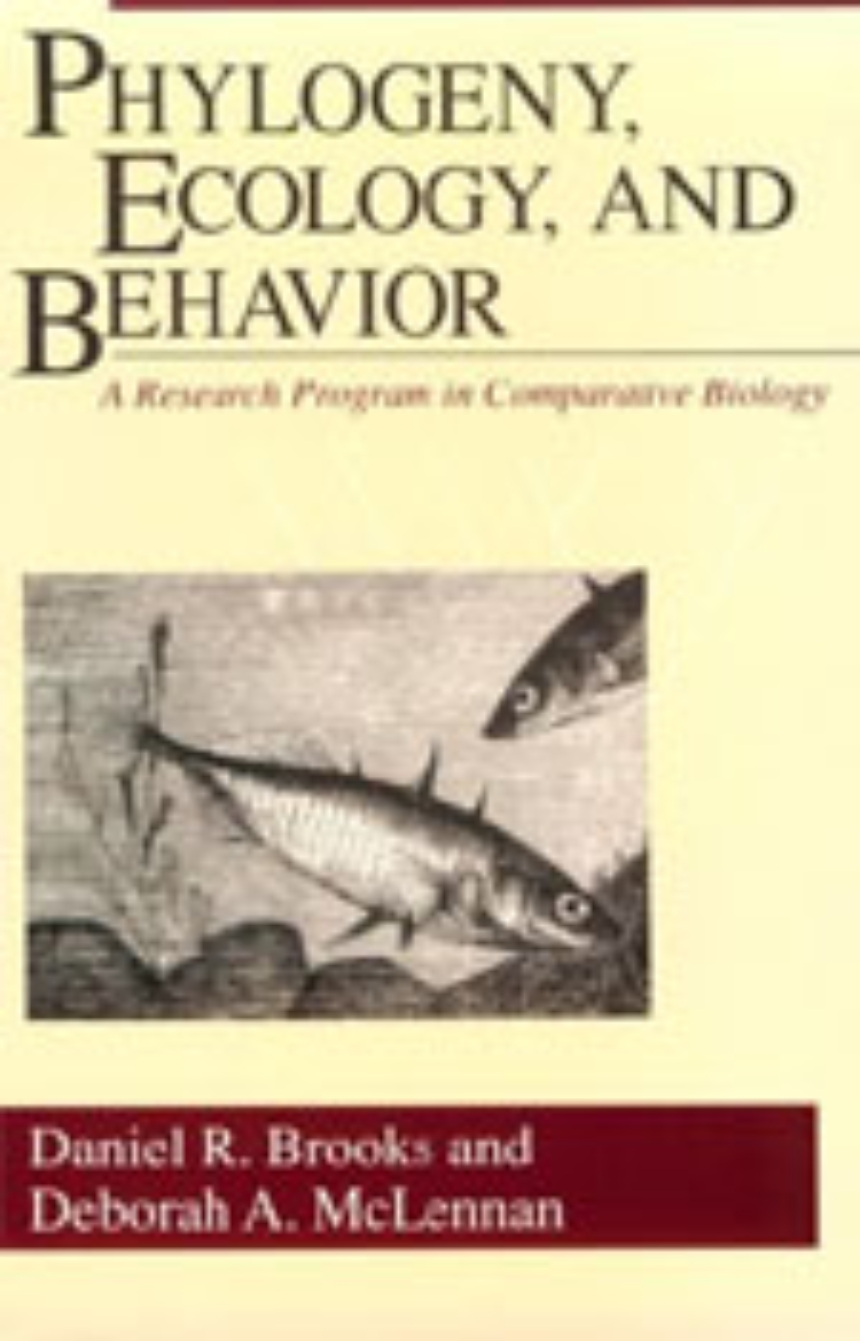Phylogeny, Ecology, and Behavior
A Research Program in Comparative Biology
Phylogeny, Ecology, and Behavior
A Research Program in Comparative Biology
"[Phylogeny, Ecology, and Behavior] presents its arguments forcefully and cogently, with ample . . .support. Brooks and McLennan conclude as they began, with the comment that evolution is a result, not a process, and that it is the result of an interaction of a variety of processes, environmental and historical. Evolutionary explanations must consider all these components, else they are incomplete. As Darwin’s explanations of descent with modification integrated genealogical and ecological information, so must workers now incorporate historical and nonhistorical, and biological and nonbiological, processes in their evolutionary perspective."—Marvalee H. Wake, Bioscience
"This book is well-written and thought-provoking, and should be read by those of us who do not routinely turn to phylogenetic analysis when investigating adaptation, evolutionary ecology and co-evolution."—Mark R. MacNair, Journal of Natural History
441 pages | 345 line drawings, 48 tables | 6 x 9 | © 1990
Biological Sciences: Behavioral Biology, Biology--Systematics, Evolutionary Biology
Table of Contents
Preface
Acknowledgements
Part One: The Basic Issues
1 Setting the Stage
The "Eclipse of History" in Ethology
The "Eclipse of History" in Ecology
A Revolution in Systematics
The Reemergence of Macroevolution as an Evolutionary Phenomenon
The Emergence of Historical Ecology
2 Tools of the Trade
Terminology
Groups of Organisms
Relationships of Taxa
Classifications
Features of Organisms
Hennig Argumentation: Building Trees
Character Coding for Building Trees
Multistate Transformation Series
Polarization Arguments and Multistate Transformation Series
Summary
Answers to Some Common Questions and Misconceptions
Part Two: Phylogeny and the Evolution of Diversity
3 Preamble to Speciation and Adaptation
Speciation
What is a Species?
How Species Are Produced: Uncovering Patterns and Processes of Speciation
The Frequency of Different Speciation Modes
Macroevolution Trends in Diversity: Species Numbers
Adaptation
Summary
4 Speciation
Assumptions of a Speciation Study
Phylogenetic Patterns of Speciation
Allopatric Speciation
Parapatric and Alloparapatric Speciation
Sympatric Speciation
A Comment on Sympatric Speciation
Some Sample Studies
The Frequencies of Different Modes of Speciation
Documenting the Influence of Microevolutionary Processes
Macroevolutionary Trends in Diversity: Species Number
Unusually Low Diversity Groups
Unusually High Diversity Groups
Summary
5 Adaptation
Character Optimization: How to Interpret Characters on a Phylogenic Tree
Methodical Caveats for the Historical Ecologist
Formulating the Question
The Temporal Sequence of Evolutionary Change
Evolutionary Association of Traits: Coadapted Trait Complexes within a Clade
Convergent Adaptation
Divergent Adaptation
Discovering Constraint: Is the Study Finished?
Adaptive Radiations
Adaptive Radiations in Ecological Preferences
Adaptive radiations in Life Cycle Patterns
Adaptive Radiations and Species Richness
A Last Look at Adaptive Radiations
A Comment on Transformational Aspects of Macroevolution
Summary
Part Three: Phylogeny and the Evolution of Ecological Associations
6 Preamble to Cospeciation and Coadaptation
A Broad Based Coevolutionary Paradigm
Cospeciation
Cospeciation in a Geographical Context: How Did the Species Come to Be in This Area?
Cospeciation in an Ecological Context: How Did the Species Come to Be in This Association?
Coadaptation
How Are the Members of an Association Interacting with One Another?
The Evolution of Closely Interacting Clades
The Evolution of Interacting Biotas
Summary
7 Cospeciation
Cospeciation in a Geographic Context: How Did the Species Come to Be in the Same Geographical Area?
Basic Methodology
Special Applications
Case Studies
Comments on Historical Biogeographic Studies
Cospeciation among Ecological Associates: How Did these Particular Species Come to Be Associated with One Another?
Historical Congruence: "Real" or Fortuitous?
Do Related Groups Show Similar or Different Proportions or Cospeciation and Host Switching?
Comments on Cospeciation in an Ecological Context
Summary
8 Coadaptation
Coevolutionary Dynamics: How Are the Members of an Association Interacting with One Another?
Allopatric Cospeciation
Resource Tracking
Evolutionary Arms Race
Case Studies
Summary
Coevolutionary and Evolutionary Specialization
Resource Specificity
Genetic Diversification
Community Evolution: Composition and Structure of Multispecies
Ecological Associations
Preliminary Examples
Summary
9 Prospective: Mastering the Possibilities of Historical Ecology
The Current Database
The Historical Ecological Perspective on Diversity: Speciation and Extinction Rates
Adaptation and Key Innovations
The Historical Ecological Perspective on Interactions
Summary of the Current Database
Possibilities for Future Research
Conservation
Integrating Historical Ecology and Functional Morphology
Integrating the Experimental and Phylogenetic Approaches: From Pattern to Process
Adaptive Changes in Quantitative Traits: Integrating the Statistical and Phylogenetic Approaches
Integrating Historical Ecology with General Evolutionary Theory
The Two Biological Hierarchies
Spatial and Temporal Scaling Effects
The Hierarchy of Evolution: Looking through Windows of Time
References
Index
